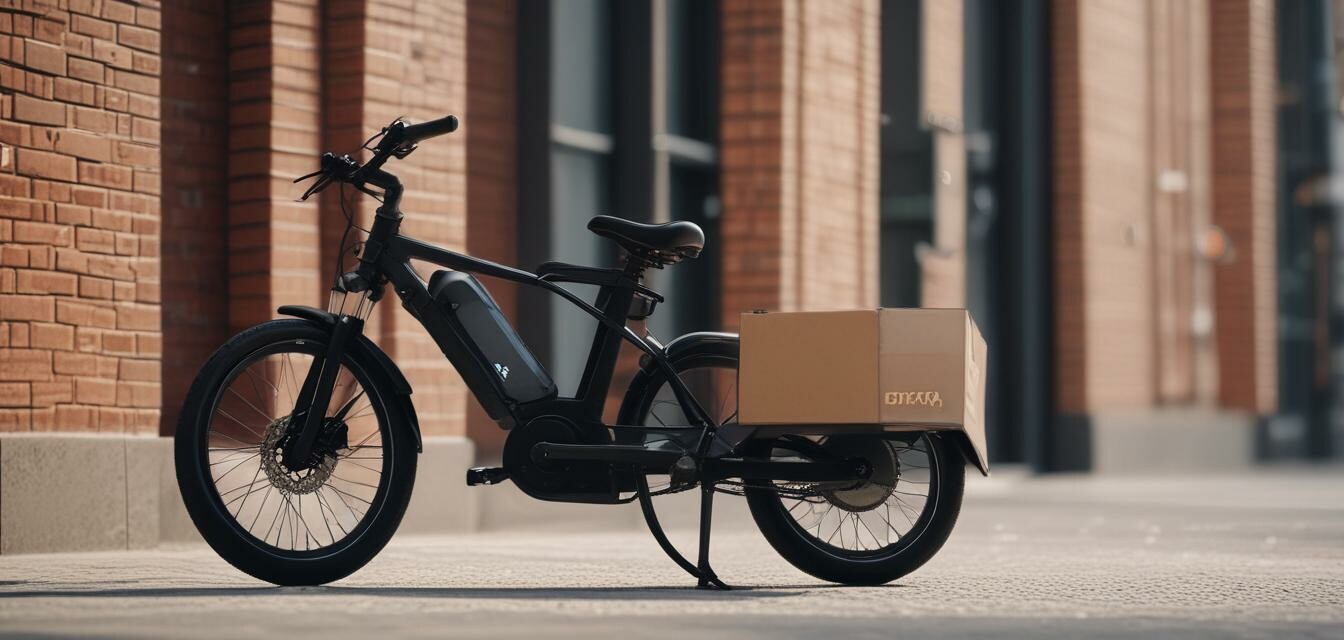
How Electric Bikes Are Changing Delivery Services
Key Takeaways
- Electric bikes are significantly reducing carbon emissions in urban delivery.
- They provide faster and more flexible delivery options for businesses.
- Urban infrastructure is adapting to accommodate the growing use of e-bikes in logistics.
- Electric bikes improve cost efficiency for delivery services.
- Safety regulations are evolving to support electric bike utilization in delivery.
The delivery industry has undergone immense changes in recent years, and one of the most impactful trends has been the rise of electric bikes. Especially in urban settings, these two-wheeled wonders are not just transforming how businesses deliver goods but are also contributing to more sustainable practices in heavily congested areas. In this article, we will explore the implications of electric bikes on delivery services and the emerging trends within this dynamic landscape.
The rise of electric bikes in urban delivery
As urbanization increases, the demand for quick and efficient delivery services is also on the rise. Traditional delivery methods often face challenges such as traffic congestion and parking issues. Electric bikes are emerging as a solution, allowing delivery personnel to navigate through crowded streets easily, avoiding the hassles of cars and vans.
Advantages of electric bikes for delivery services
- Environmental impact: Electric bikes reduce carbon emissions and noise pollution, making cities cleaner.
- Speed: They can often avoid traffic jams, resulting in faster delivery times.
- Cost-effective: Operating costs of electric bikes are significantly lower compared to traditional delivery vehicles.
- Health benefits: Delivery personnel can remain active, promoting a healthier lifestyle.
Emerging trends in the delivery sector
As electric bikes continue to gain popularity, several key trends are shaping their role in the delivery sector:
| Trend | Description |
|---|---|
| Increased adoption by major retailers | Retail giants are incorporating electric bikes into their logistics to enhance delivery efficiency. |
| Expansion of bike-sharing platforms | Bike-sharing services are adding electric bikes to their fleets, supporting small and local business deliveries. |
| Technological advancements | Improved battery technology is enhancing the range and performance of electric bikes for delivery. |
| Government incentives | Many cities are offering grants or subsidies to businesses that utilize electric bikes for deliveries. |
| Focus on safety regulations | As the use of electric bikes grows, more regulations are being implemented for safety on the roads. |
How electric bikes are reshaping delivery logistics
Electric bikes are not just a fleeting trend; they are revolutionizing the logistics of delivery services. Their integration allows businesses to rethink how they manage their supply chains and respond to customer demands in real-time. Consider these factors:
- Infrastructure development: Cities are accommodating e-bike deliveries by improving bike lanes and parking facilities.
- Data utilization: Companies are leveraging data analytics to optimize delivery routes and reduce time effectively.
- Competitive advantage: Emphasizing sustainability can provide businesses with a competitive edge in the market.
Conclusion
Electric bikes are swiftly becoming a crucial component of urban delivery services. The combination of efficiency, sustainability, and cost-effectiveness paves the way for a brighter future for delivery logistics. As infrastructure continues to improve and technologies advance, the electric bike is poised to play an even more prominent role in reshaping how goods are delivered in bustling urban environments.
Tips for businesses looking to adopt electric bikes
- Conduct research on the best e-bike options tailored for delivery purposes.
- Train delivery personnel to ensure safety and efficiency on the road.
- Stay informed about local regulations regarding e-bike usage.
- Utilize tracking software to manage deliveries effectively.
Pros
- Reduces environmental impact and emissions.
- Improves delivery times in congested areas.
- Lower operation costs compared to gasoline-powered vehicles.
- Encourages healthier lifestyles for delivery personnel.
Cons
- Limited range compared to cars for long-distance deliveries.
- Weather conditions can affect delivery timing.
- Initial investment costs may be higher.
As we continue to observe these trends in electric bike usage within delivery services, it’s clear that the landscape is changing. To stay updated on the latest in the e-bike market, check our News & Trends section for future insights!